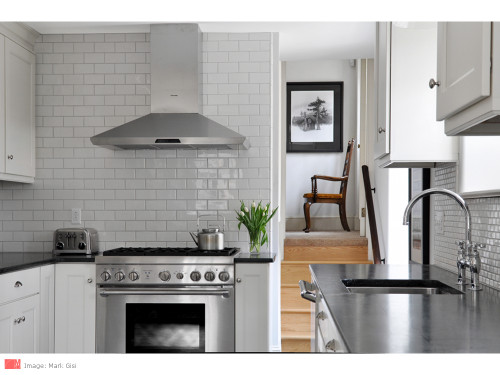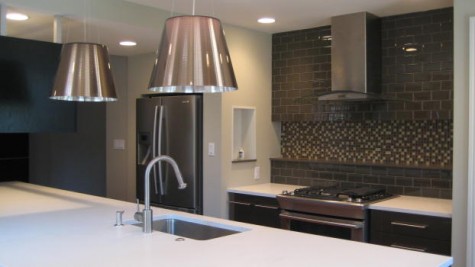 Choosing an appliance package is always a complex decision for a homeowner. Interestingly, a single appliance purchase can often provide the “tipping point” for an entire kitchen renovation. In fact, we routinely get calls from people who have put off redoing their kitchen for 20+ years, but suddenly their stove, refrigerator, or dishwasher breaks, and they jump into addressing the overall problem of the poorly designed or worn out space they have put up with for decades.
Choosing an appliance package is always a complex decision for a homeowner. Interestingly, a single appliance purchase can often provide the “tipping point” for an entire kitchen renovation. In fact, we routinely get calls from people who have put off redoing their kitchen for 20+ years, but suddenly their stove, refrigerator, or dishwasher breaks, and they jump into addressing the overall problem of the poorly designed or worn out space they have put up with for decades.
When we help clients make appliance selections, we first help them determine their overall kitchen renovation budget — this tells us what price point they should be at for both appliances and cabinets. And while the available selections run the gamut from the most basic to the very posh, here are some important things to keep in mind when making your selections.
Entry-level packages: There are many affordable, attractive, and serviceable stainless steel appliance packages from KitchenAid, GE, Frigidaire, and other manufacturers that include the four main elements that most homeowners need: a microwave/hood, refrigerator, dishwasher, and range. If you prefer a hood separate from the microwave, keep in mind that will add to the cost of the package, as will the extra wiring and ducting it requires. The biggest drawback at this price point is that the appliances sometimes have fewer bells and whistles and flimsier construction, such as feet that are prone to bending and breaking, and they can sometimes be harder to level and install.
Mid-range packages: This price point is appropriate for homeowners who are more serious about cooking and appreciate the finer elements of a well-appointed kitchen. Manufacturers targeting this range include Bosch, Viking, and JennAir — but before you invest in a mid-range package, it’s important to determine whether the items are in fact made and branded by the same company. When it comes to resale, future prospective homebuyers will appreciate that you have invested well in your kitchen.
High-end packages: You are likely looking at Sub-Zero, Wolf, Miele, Thermador, Gaggenau, or La Cornue appliances at this level. High-end appliance packages include highly sought after items like state-of-the-art, oversized, professional-grade refrigerators and dual-fuel ranges, double ovens, dual-drawer dishwashers, and other high-tech gadgets like warming trays and steamers. The upside of these appliances is they last many decades, provide exceptional performance, and have superior and impressive brand name recognition if and when you sell your house. The downside? Higher end appliances are super heavy and unwieldy to deliver and install. At one recent project, the fridge was so large it did not fit through the front door and had to come through a window. This was no small feat! Higher performance ranges will require the use of commercial-grade gas lines. And locating the electrical, water, and gas lines properly during planning and rough-in phases is crucial to the appliances fitting in their spaces later.
No matter what level appliance package you choose, it is important to understand that this purchase presents substantial logistical challenges. Aside from careful kitchen planning and design, someone has to deliver the items in perfect condition, install them, and ensure that the proper wiring and plumbing and ducting is all in the right place so everything fits and works as it should. What’s more, all of this must be done without damaging the project house or the surrounding cabinets and floors. For these reasons and more, we tend to use factory-certified installers on high-end packages. While it costs a bit more, these subs know the units, they get their work done efficiently, and the homeowners receive a better warranty in the process.
As with so many things in life, when it comes to appliances, you truly get what you pay for.


